| Umělec magazine 2002/3 >> Octobriana a ruský underground, part 2. | List of all editions. | ||||||||||||
|
|||||||||||||
Octobriana a ruský underground, part 2.Umělec magazine 2002/301.03.2002 Tomáš Pospiszyl | focus | en cs |
|||||||||||||
|
"What Really Happened (One Version)
Petr Sadecký had known Zdeněk Burian and Bohuslav Konečný since his childhood when he searched them out as their fan. He soon won their trust and gradually went from being an immature fan to becoming a good friend. He helped both artists with their archives. He assisted Burian with his exhibitions and Sadecký’s father was also allegedly involved. He published several minor texts on Zdeněk Burian. A strong friendly bond developed between the young student and the two artists, who treated him like their own son. The trustful illustrators gave the charismatic young man several of their drawings. It is likely that he also took some illustrations behind their back or under various pretexts. Vladimír Prokop wrote in his book Illustrator Zdeněk Burian that sometime at the beginning of 1966, Sadecký came to Burian and Konečný with an offer to make a comic commissioned by a Swedish publisher. Bohumil Ko nečný and Miloš Novák made the drawings and Zdeněk Burian painted eight covers for the individual stories. The main character of the adventurous tale was to be called Amazona. The concept of the stories, however, was born in 1965 at a time when Sadecký was in the military, which his fellow soldiers confirmed. In November 1965, Sadecký wrote a letter to Konečný in which he described the ambitious goals of their work: “This is a chance to conquer the West. Do you realize what this cult will mean to the rotten Western culture? I’ll come up with a story and they [the team of illustrators including Konečný] will combine it with sex. This won’t be art. We’ll use pseudonyms and we’ll storm the idiotic public. We’ll make money on the most sublime intentions.” Sadecký continued: “I was inspired by your fighter in jeans, female James Bond. Keep this one and I’ll save it as a relic. I’m sure you know what cults mean to the rotting Western culture, what Tarzan meant for all of America and Mr. Borroughs, Flash Gordon, what BB is. In the competition they called, they clearly wrote: If it is original, it will have over 300 sequels. What we need in the beginning is not firing but strenuous combination. Construct variations on the heroine type like engineers. We’re looking for the code of popularity. And once again I stress: As I’ve gone through your material, it is absolutely original, it will be a blast of sorts, an invention.” It appears that Amazona was originally planned for some kind of competition, either fabricated or unsuccessful, for the team of authors Konečný–Sadecký. Sadecký managed to convince Konečný that to make it in the Western comic market, they would have to work with an expensive mediating agency, which would require an advance fee for its services. However, they could pay the fee by making some work for free. According to Sadecký’s instructions, Bohumil Konečný made about 80 various covers and other illustrations not connected to Amazona. He gave them to Sadecký who allegedly used them to pay for the agency fee. After 1964 Sadecký was regularly traveling abroad. He visited Austria and he visited West Germany seven times before actually emigrating there. The required invitations came from Rolland Schmidt, one of the owners of Karl May Verlag publishing house. It is unknown to what extent their relationship was based on friendship or work. However, it is certain that Sadecký’s career was closely connected with the publisher for several years. Apparently, motivation for making the Amazona comic series was, to a certain extent, a financial one. It was supposed to be a way to get rich and make a name in the Western market. In 1971, Sadecký claimed that the far-fetched Octobriana comic stories would easily make money, amounting to $1,000. One of his million-dollar ideas, where Octobriana and her friends take the Druzhba pipeline to Hungary to liberate the jailed Cardinal Mindszenty, was used in a James Bond film. (007 used the pipeline to escape from Czechoslovakia to Austria.) Petr Sadecký is included in right-wing activist Petr Cibulka’s famed list of secret-police collaborators as an agent-confidante reporting directly to headquarters. Why? Possibly he thought that working with the secret police would be a source of exciting adventures. Perhaps it was a way to get permission to travel to Western Europe. At any rate, at the end of his career as an informer he took on as a cover name that of the adventure-literature author Otakar Batlička. On 5 January 1967, Sadecký emigrated to West Germany under the guise of an extended journey for educational purposes. It is unclear whether Konečný and Burian knew that their work — more than a thousand drawings and paintings — left with Sadecký. It is possible they considered Sadecký their agent and were hoping he would sell their comics to a Western publisher. Amazona Travels When he arrived in Germany, Sadecký’s first steps lead to the Karl May Verlag publishing house in Bamberg, Bavaria, where he immediately sold some of Burian’s drawings and illustrations. It is likely that he tried to sell the incomplete Amazona comics but failed. He began working for the publisher as a freelance illustrator. Based only on his own word, he spent the following months traveling around Europe. He finally settled in Munich and briefly worked for the Institute for Research on the USSR. Following heated debate in Washington, D.C., over the Institute’s role as a CIA branch, the U.S. Senate shut it down. Initially, Burian and Konečný did not know Sadecký had gone. In April 1967, Konečný received a letter from Sadecký from New Zealand: “All things including Amazona successfully sold to Drake in Canada with a 20% profit, the returns are 8,000 dollars. Every single penny was invested into a project in New Guinea. It’ll pay off if the project works out; keep your fingers crossed.” Konečný realized he had lost all control over his work and that Sadecký — whom he had known for 18 years, ever since the 10-year-old fan had approached him for an autograph — had sold it all for his own benefit. Sadecký sent letters to Konečný from Texas, Panama and elsewhere, creating the impression that he was traveling the world and would be impossible to reach. In fact, he lived in Europe, mostly in Bamberg, selling Burian’s and Konečný’s drawings. (The world traveler was a co- owner of Karl May Verlag.) For unauthorized emigration, Sadecký was sentenced in absentia to eight years in prison. But this was not his only problem with the law. In May 1969, police on the periphery of Paris picked him up. He was handcuffed and appeared to have been violently attacked. Sadecký told the police that Czechoslovak counterintelligence had kidnapped and raped him. When investigators surmised that he had handcuffed himself, Sadecký confessed to the hoax, claiming that he made up the assault to warn pre-election France of the dangers of communism. He received a three-month jail sentence and a fine, but was released after only three weeks. Sadecký tried to sell Amazona to various European publishers, but the farfetched stories and oldfashion ed style made it impossible. Compared to the booming Western comics of the time, Amazona was a relic of the 1940s, when its authors had last glimpsed international developments of the genre. The most interesting thing about Amazona was its country of origin, from which Sadecký had escaped and where he was wanted by the police. Unable to sell Amazona as an “ordinary” heroine, Sadecký appears to have come up with various ways to make her more attractive. His likely inspirations included his fate as an exile from Eastern Europe, an interest in adventure and the Soviet Union and in the Warsaw-Pact invasion of Czechoslovakia in August 1968. We will never know when he first drew the red star on Amazona’s forehead, but it was at this point that Octobriana was born. He stuffed some of the altered drawings in an envelope and sent them to Konečný sometime in the middle of 1968. Konečný was astonished. Adding political connotations to the story and publishing it in the West would mean professional suicide for him and Burian in occupied Czechoslovakia. At this time, the two artists and Sadecký clashed over the future of their heroine. Burian and Konečný opposed politicizing Amazona; Sadecký advocated it. He considered himself Octobriana’s creator, a director who was free to cast his character in any role he pleased. Separated by the Iron Curtain, the scriptwriters and the director were not able to come to an agreement. Konečný demanded that Sadecký returned all drawings, although they had been altered without his consent. In autumn 1969, Konečný went to Bamberg to claim the drawings in person. He also contacted the West German police. The case went to court, which decided in February 1970 that Sadecký had turned Amazona into an anti-Soviet character. (Unfortunately, records of this court proceeding were discarded in the mid-1990s.) Konečný and Burian received all the drawings the West German police were able to find in spring 1970. As it turned out, they missed quite a few. Sadecký had hidden dozens of drawings. With these and his talent at fabrication, he was able to produce an entire book. There was so little original material that he had to supplement the book with an extensive, mystifying introduction and other explanatory texts. (On the other hand, the introduction used some of Konečný’s other drawings, which were not directly related to the comics.) Sadecký also staged the PPP meeting documented in the black and white photographs. All he needed was an anonymous room, some Soviet newspapers, three friends posing in fur hats and four bad posters imitating the original comics. It is possible that Sadecký fabricated Octobriana’s Russian-dissident roots in a naive attempt to protect his friends in Prague. Then again, maybe he only wanted to trick them into publishing the comics. Either way, it certainly was not to make the book marketable: The newly conceived book elicited even greater doubts than the original Amazona. Karl May Verlag wouldn’t publish it, as they were familiar with its dubious background, thanks to the court case and their previous cooperation with Sadecký. He tried his luck with British and American publishers but to no avail. Playing up the sexual tone of the story, he appealed to Playboy, but Hugh Hefner rejected the offer, (justifiably) afraid of legal complications. A similar scenario followed in the British magazine The Observer. It was more or less an accident that Sadecký came across the publisher Tom Stacey, showing up unannounced at his office, clutching a portfolio of drawings. A few years ago, scientist Michael Kennaly interviewed Stacey about Octobriana, but the publisher stated nothing that was not already known. In the early 1960s, his publishing house focused on political literature of an extreme right-wing nature. It is clear today that he published Octobriana as part of his personal mission to fight communism. He decided to portray the book, with its bad reputation and unclear origins, as a story warning young people of the perils of life in totalitarian regimes. Stacey’s contribution to Octobriana’s birth might be greater than one would at first think. It was probably his idea to have the famous Soviet dissident Kuznyetsov, whom Sadecký had never met, write the foreword. He also had final say in editing and layout. He had great influence on the book’s successful media campaign and turned the book’s nonsensical origin into an ingenious marketing tool. Nearly three years after Sadecký first added a red star to Amazona’s forehead, the first edition came out. Josef Josten (1913–1984), exiled Czechoslovak publisher and founder of a press agency specializing in news from Czechoslovakia, also influenced the birth and promotion of Octobriana. According to Czechoslovak media of the time, he worked with the British secret service. Josten became Sadecký’s British agent and allegedly bought reproduction rights for all materials connected with Octobriana. However, the young exile probably deceived Josten, who believed that the material was authentic. Josten’s widow remembered that he was deeply disturbed when he learned that Octobriana was a hoax. The legend charmed other specialists on Eastern Europe as well. Although we will never know all the facts about Octobriana’s birth and development, we know that Sadecký betrayed his friends in the cruelest manner. Money was only part of his motivation. Like any good comic author, Sadecký portrayed the drama of his own life in his art. The desire for expression and the belief in his creation were so strong he did not hesitate to stab his best friends in the back. The Story Continues U.S. publishers Harper & Row published Octobriana and the Russian Underground in 1971. First-year sales exceeded 6,000 copies. Comic book circulation regularly reached hundreds of thousands at the time, but Octobriana was different, with its book format and dominance of text over images. The British and the American versions of Octobriana differ. The later U.S. version is almost 40 pages shorter, as chapters on Soviet cinema and Sadecký’s teenage years in Prague were left out. Germany’s Brumm Comix published Octobriana in 1972 with a different cover, content and layout. The differences between the individual versions reveal Sadecký’s working method. He used individual images freely to compose collages whose content was often different from the original pictures. He also altered Konečný’s original illustrations with his own work, making them correspond with the heroine’s new escapades. The comics became more pornographic. Sadecký added a masturbation scene to the Tibet sequel. In the Kamchatka adventure, he did not hesitate to use Burian’s illustrations from Josef Augusta’s book Ztracený Svět (Lost World). Either Sadecký had lost it completely by this point or he no longer feared prosecution. The book attracted attention also in the Eastern Bloc, although no one was actually able to lay their hands on it. The Soviet magazine Literaturnaya Gazeta ran an extensive article full of the usual ideological and paranoid attacks on the CIA. The magazine also attacked Kuznyetsov and Sadecký, accusing them — among other things — of homosexuality. Octobriana enticed an unusual response from Czechoslovak propaganda officials, who described Sadecký as a scoundrel and a mobster (true to the extent that he was a double agent) whose victims, Burian and Konečný, were guilty of naivete and frivolity. Their repeated explanations and public denouncements of Sadecký did not help them much. Both artists appeared in a 1972 Czechoslovak TV documentary “The Scandal of Amazona.” Konečný drew Amazona on live TV to prove that he was the deceived artist and that Octobriana wasn’t a product of Russian dissidents, but the bastardized project of Czech illustrators. Burian and Konečný found themselves in the middle of ideological crossfire typical of the Cold War era. Journalist Jiří Hečko wrote in the magazine Svět Socialismu (The Socialist World): “No illustrated sex bomb, however sophisticated she might be, will break into and dominate the Kremlin. Let the so-called serious Western press clear the path into the world for her with their nonsensical babbling that she is the voice of protest against economic and overall human oppression in the USSR. Indeed, no other country in the world respects woman, the mother, as much as the Soviet Union.” It is very likely that Hečko never saw the original comics either. Toeing the party line did not save Burian and Konečný’s careers. Burian returned to painting prehistoric reconstructions but was forced to stop illustrating adventure novels. The affair’s impact on Konečný was much more severe, as he had no alternative career. The scandal tainted all the comics in Czechoslovakia, branding the genre as a decadent and ideologically dangerous form of Western culture. "
01.03.2002
Recommended articles
|
|||||||||||||
|
04.02.2020 10:17
Letošní 50. ročník Art Basel přilákal celkem 93 000 návštěvníků a sběratelů z 80 zemí světa. 290 prémiových galerií představilo umělecká díla od počátku 20. století až po současnost. Hlavní sektor přehlídky, tradičně v prvním patře výstavního prostoru, představil 232 předních galerií z celého světa nabízející umění nejvyšší kvality. Veletrh ukázal vzestupný trend prodeje prostřednictvím galerií jak soukromým sbírkám, tak i institucím. Kromě hlavního veletrhu stály za návštěvu i ty přidružené: Volta, Liste a Photo Basel, k tomu doprovodné programy a výstavy v místních institucích, které kvalitou daleko přesahují hranice města tj. Kunsthalle Basel, Kunstmuseum, Tinguely muzeum nebo Fondation Beyeler.
|



















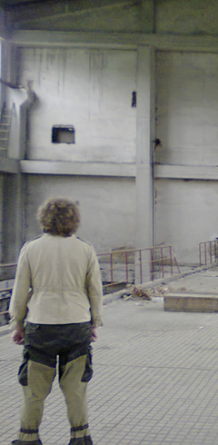






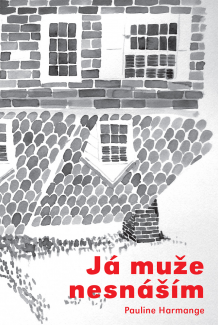




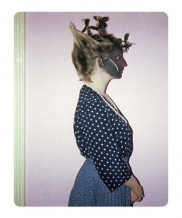
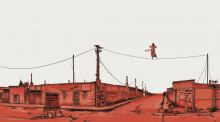
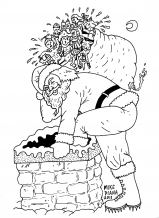



 We Are Rising National Gallery For You! Go to Kyjov by Krásná Lípa no.37.
We Are Rising National Gallery For You! Go to Kyjov by Krásná Lípa no.37.
Comments
There are currently no comments.Add new comment